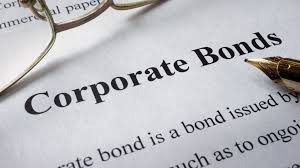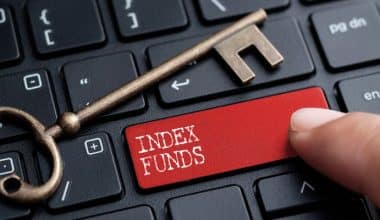A corporate bond is a financial instrument utilized by companies to generate funds through the issuance of debt. Interest rates can have a substantial impact on the price that investors are willing to pay for a bond. Higher prevailing interest rates typically lead to a decrease in prices for existing bonds. This is due to the fact that when interest rates rise, newly issued bonds tend to have higher coupon rates. As a result, existing bonds become less appealing unless they can be acquired at a lower price. Do not worry if you are considering investing in the stock market and are concerned about the issue of corporate bonds and their rates. This article emphasizes it for your comprehension.
Corporate Bonds Rates
A corporate bond is a debt security issued by a corporation and sold to investors. The company obtains the necessary capital, while the investor receives a predetermined number of interest payments at either a fixed or variable interest rate. Upon reaching maturity, the bond ceases to make payments and the initial investment is returned. The bond’s support is typically based on the company’s capacity to repay, which is contingent upon its future revenue and profitability prospects. Physical assets of a company can serve as collateral in certain instances.
Prior to being issued to investors, bonds undergo a creditworthiness assessment by one or more of the three prominent U.S. rating agencies: Standard & Poor’s Global Ratings, Moody’s Investor Services, and Fitch Ratings. Different ranking systems exist for bonds, with the highest-rated bonds commonly known as “Triple-A” rated bonds. High-yield bonds, also known as low-rated corporate bonds, are characterized by higher interest rates that are intended to offset their elevated level of risk. These are commonly referred to as “junk” bonds. Bond ratings are crucial for informing investors about the quality and stability of a bond. These ratings significantly impact interest rates, investment sentiment, and bond valuation.
The yields of corporate bonds are influenced by changes in government bond yields due to the yield advantage they offer compared to U.S. Treasuries. This yield advantage, also known as yield spread, determines the pricing of corporate bonds. For instance, when Acme Corp. offers a bond with a 5% interest rate while the 10-year Treasury rate stands at 3%, there exists a yield advantage of one percentage point. If the yield on the 10-year Treasury rate decreases to 2.5%, the corporate bond yield will also decrease to 4.5% under the assumption that all other factors remain constant.
Short-Term Corporate Bonds Rates
Bond investments can be a great method to increase the return on your money while lowering the danger of capital losses. This is especially helpful when you are getting close to a financial objective because stock market volatility might lead to significant capital losses that happen quickly. Corporate bonds frequently outperform Treasury bonds issued by the federal government and municipal bonds issued by state and local governments in terms of yields. Bond maturities categorize bonds into short, middle, and long-term categories. Moreover, Bond investors search for a higher return when there is a high-interest rate risk, when they are more sensitive to the issuer’s health, or when the economic outlook changes. Bond yields decrease when interest rates rise, and bond prices increase. The bond’s maturity, however, determines how much the price of the bond moves.
Bond maturities categorize bonds into short, middle, and long-term categories. In essence, investors’ debts to bond issuers are what bonds are. After the bond matures, the issuers collect the investors’ money, pay interest, and then repay the principal. Three to four years is the maturity period for short-term bonds, whereas four to ten years is the maturity period for intermediate-term bonds. Long-term bonds are those with maturities of more than 10 years. Short-term corporate bond rates are currently hovering around 2.5%. This is up from 2% a year ago, but still relatively low compared to historical levels. The Federal Reserve has been raising interest rates in an effort to combat inflation, and this has had a modest impact on short-term corporate bond rates. However, the overall demand for corporate bonds remains strong, which has helped to keep rates in check.
High Yield Corporate Bonds Rates
High-yield corporate bonds are bonds that are issued by companies with a credit rating below investment grade. These bonds are considered to be more risky than investment-grade bonds and therefore offer higher yields. The current high-yield corporate bond rates are around 6%. This is higher than the rates on investment-grade bonds, which are around 4%. The higher yield on high-yield corporate bonds reflects the higher risk associated with these bonds. High-yield corporate bonds can be a good investment for investors who are looking for higher yields. However, it is important to remember that these bonds are more risky than investment-grade bonds, and investors should only invest in these bonds if they are comfortable with the risk.
Here are some of the risks associated with high-yield corporate bonds:
- Default risk: The risk that the company will not be able to repay the bond.
- Interest rate risk: The risk that the value of the bond will decline if interest rates rise.
- Inflation risk: The risk that the value of the bond will decline if inflation rises.
Investors should carefully consider these risks before investing in high-yield corporate bonds. The credit, liquidity, and valuation risks associated with high-yield bonds may be higher than those associated with higher-rated instruments. Due to their speculative nature, high-yield bonds are also more volatile than investment-grade securities and carry a greater risk of loss (including principal loss) from missed payments, defaults, or downgrades.
Both HYHG and IGHG do not make any effort to counteract changes in the market’s perception of the underlying credit risk of the corporate entity, which affects the price and yield of corporate bonds in addition to rising Treasury interest rates. By shorting Treasury futures, HYHG and IGHG hope to protect high-yield bonds and investment-grade bonds from the potentially disastrous effects of rising interest rates.
High-Quality Corporate Bonds Rates
High-quality corporate bonds are bonds issued by companies with strong financial ratings. These bonds are considered to be relatively safe investments, and they typically offer higher yields than government bonds. The current rates for high-quality corporate bonds vary depending on the credit rating of the issuer and the maturity of the bond. For example, the average yield for an AAA-rated corporate bond with a maturity of 10 years is currently around 3.2%. High-quality corporate bonds can be a good investment for investors who are looking for a higher yield than government bonds, but who are also looking for a relatively safe investment.
Best Corporate Bonds Rates
The best corporate bond rates vary based on the issuer’s credit rating, the bond’s maturity, and the environment for interest rates at the time. Investment-grade corporate bonds often yield more than government bonds while high-yield bonds yield even more but come with greater risk. As of February 24, 2023, these are some of the greatest rates available for corporate bonds:
- Corporate bonds of investment grade: 4.25%
- Corporate bonds with a high yield: 5.50%
Before purchasing corporate bonds, it is crucial to speak with a financial counselor because these rates are liable to fluctuate. The best corporate bond rates are currently around 3.5%. This is based on a survey of recent bond offerings from major corporations.
The rates vary depending on the credit rating of the company and the maturity of the bond. For example, an AAA-rated company with a 10-year bond might offer a rate of 3.25%, while a BBB-rated company with a 5-year bond might offer a rate of 4%. It is important to note that these rates are subject to change based on market conditions. It is always a good idea to consult with a financial advisor before investing in corporate bonds. The best corporate bond rates are currently around 3.5%. This is based on a survey of major investment banks and bond brokers. The rates are for investment-grade bonds, which are considered to be relatively safe investments. The rates are higher than they were a few years ago, but they are still relatively low compared to historical levels.
Additional Tip
The best corporate bonds are those that are issued by companies with strong financial ratings. These companies are more likely to be able to pay back their debts, which means that investors are less likely to lose money. The best corporate bonds are also those that have a long maturity date. This means that investors will receive payments for a longer period of time, which can help to offset the risk of inflation. If you are looking for a safe and reliable investment, corporate bonds can be a good option. However, it is important to do your research and understand the risks involved before investing.
What Are the Corporate Bonds Rates U.S?
US Corporate AAA Effective Yield is currently at 4.73%, up from 3.88% last year and 4.61% on the previous market day. This is greater than the average over the long term of 4.03%.
What Are the Corporate Bonds Rates in India?
The corporate bond rates in India are currently around 7.5%. This means that if you buy a corporate bond with a face value of Rs.100, you will receive an interest payment of Rs.7.5 every year. The interest rate is determined by a number of factors, including the creditworthiness of the company issuing the bond, the maturity of the bond, and the current interest rates in the economy.
These factors affect corporate bond rates in India:
- Company creditworthiness: The company’s bond interest rate decreases with creditworthiness. Investors are more convinced the corporation can pay its debt.
- Bond maturity: Longer bonds often pay greater interest rates. Investors risk more by lending money over longer periods.
- Economic interest rates: Economic interest rates affect corporate bond rates. High-interest rates raise corporate bond rates. This is because investing in government bonds yields a larger return.
What Are AAA Corporate Bonds Rates?
Compared to 4.68% yesterday and 4.06% last year, Moody’s Seasoned AAA Corporate Bond Yield is 4.60%. Lower than the long-term average of 6.49%. The best and safest bonds have a AAA rating. Ranging from AAA to C and D, ratings. To establish the safety of bonds, credit rating companies consider a number of variables.
What Are GE Corporate Bonds Rates?
As of February 25, 2023, the interest rates for GE corporate bonds range from 2.85% to 4.65%. The average interest rate is 3.75%. The bonds have a maturity date ranging from 2023 to 2053.
Conclusion
A bond purchaser provides financing to a corporation. When an individual invests in a corporation, they are effectively purchasing a portion of the business. When the price of a stock goes up or down, the investor’s holdings do the same. Earnings might come through selling the shares at a higher price, receiving dividend payments from the corporation, or both. Bonds are investments that provide interest rather than capital gains. Only if the company fails would the initial investment be in jeopardy. When a corporation goes bankrupt, it still has obligations to its creditors, including bondholders. Loss compensation for stockholders is contingent upon the satisfaction of all such obligations.
Related Posts
- How to Buy Government Bonds in the US (Updated)
- How To Buy Bonds: Top Easy Steps to Follow
- BONDS: How Do Bonds Work For Construction, Jail, and School.
- ANNUITIES: Definition, Rates, Disadvantages, Immediate Rates, and Guide
- MUNICIPAL BONDS: Definition, Rates, How to Buy & Difference





